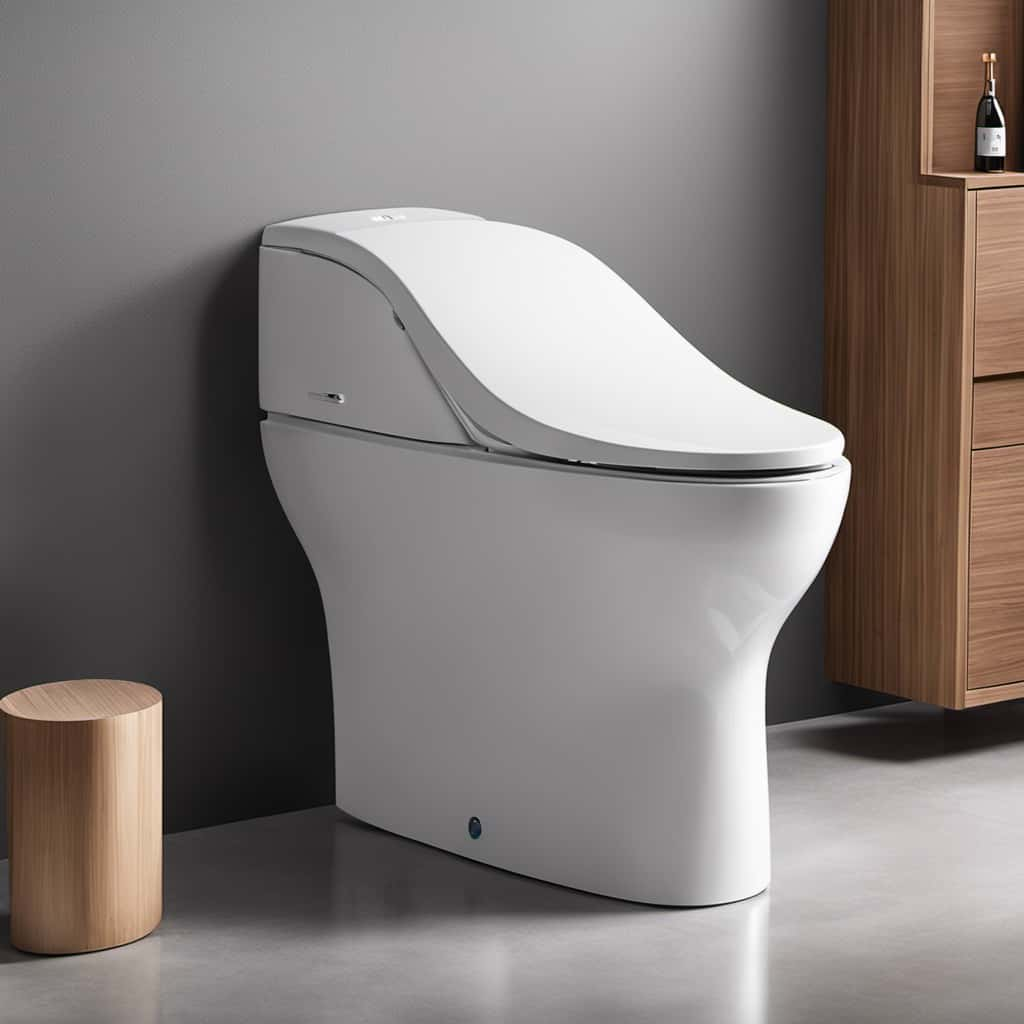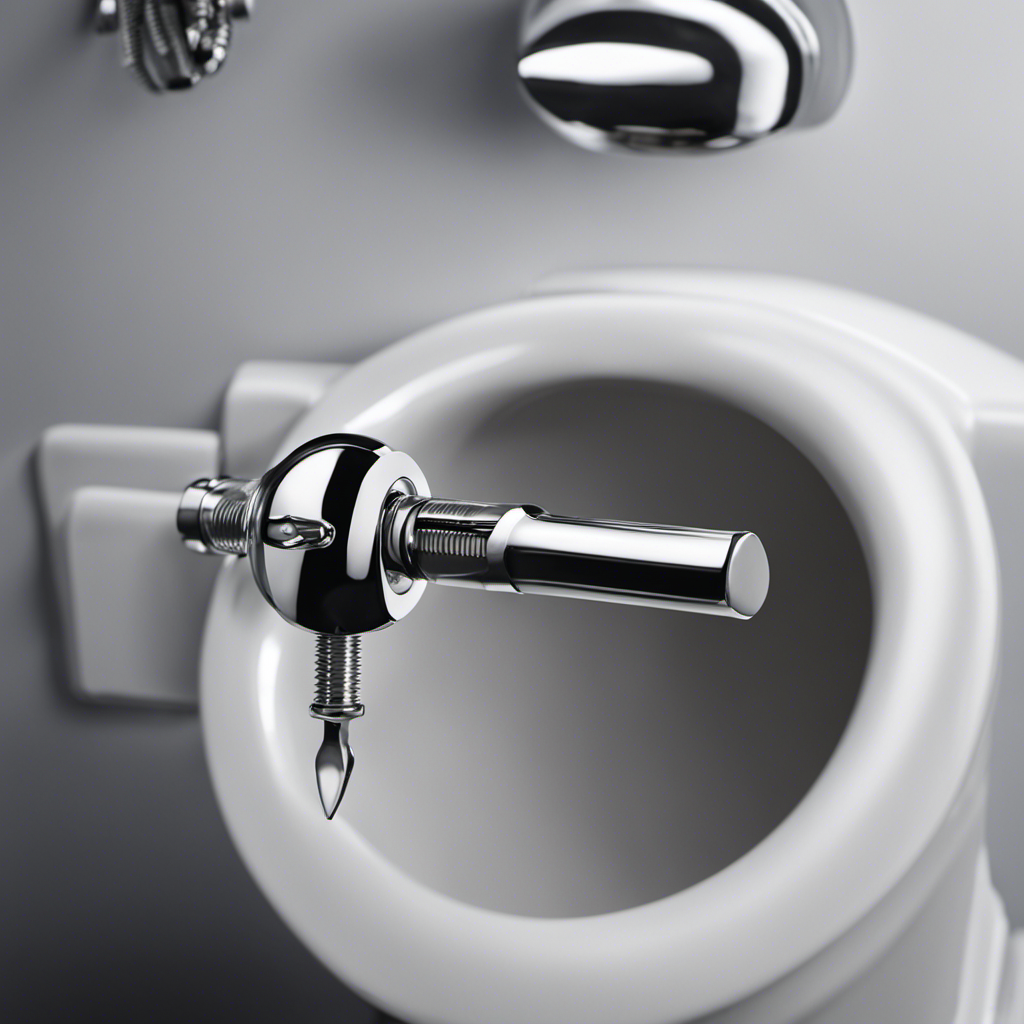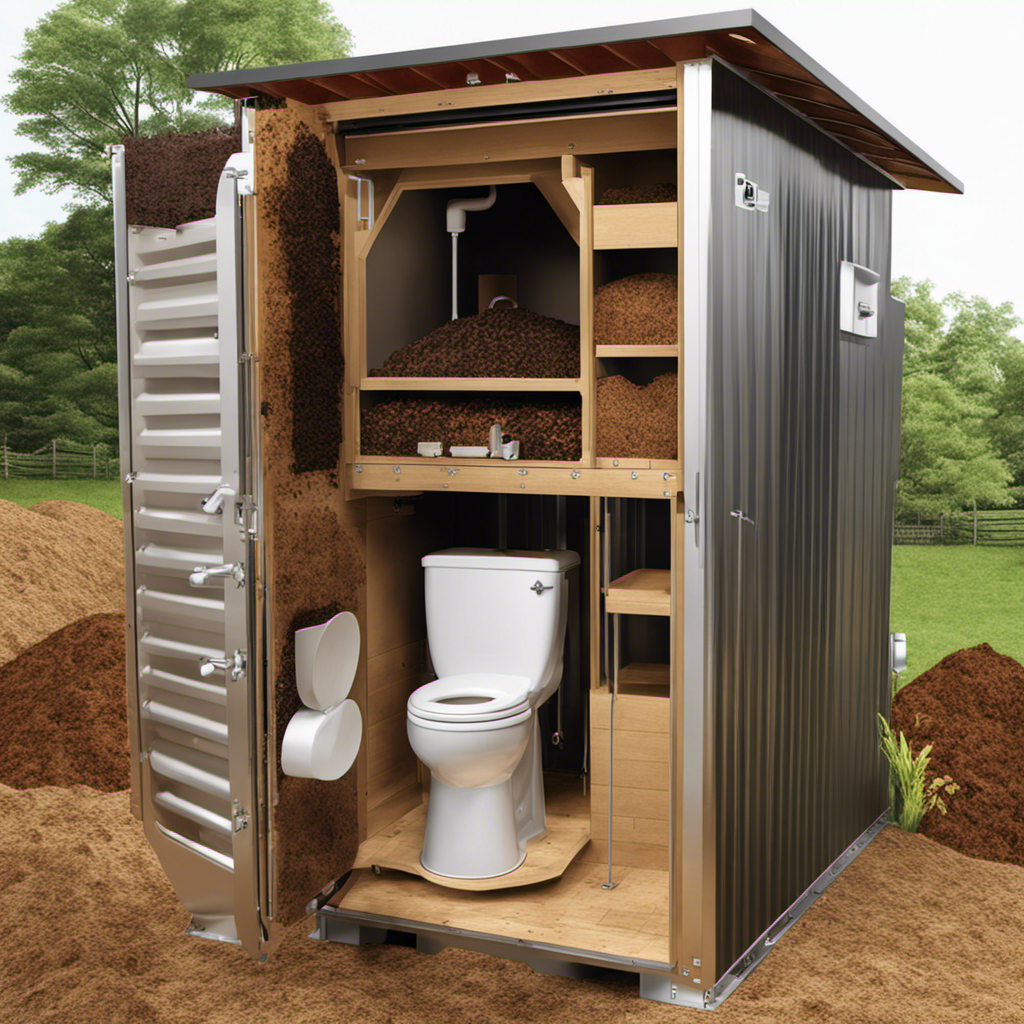Have you ever pondered the reason behind toilets having dual flush options?
Well, buckle up because we’re about to dive into the fascinating world of water conservation and waste management.
In this article, we’ll explore the benefits of dual-flush toilets, from reducing water usage to their positive environmental impact.
Get ready to master the art of efficient flushing as we unravel the secrets of why toilets have two flushes.
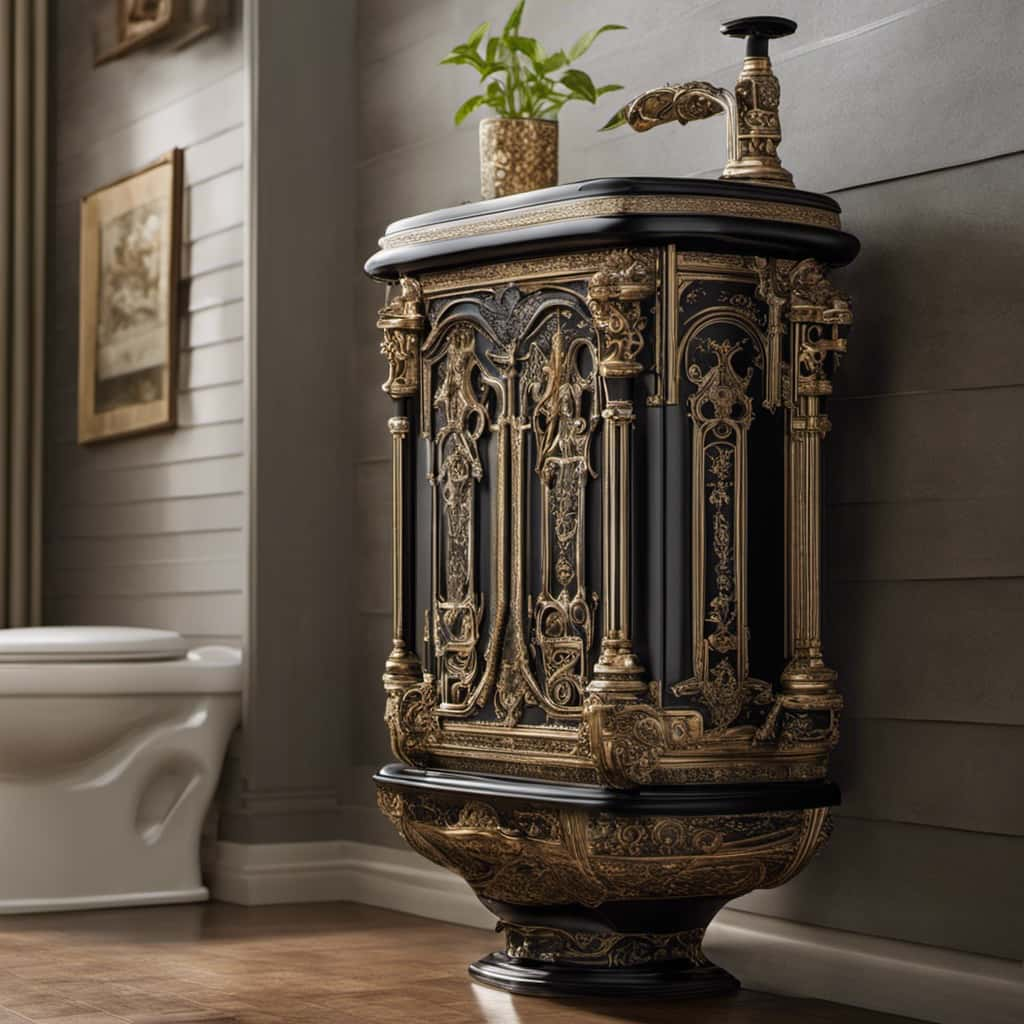
Let’s flush out the knowledge and make a splash in the world of bathroom innovation!
Key Takeaways
- Dual flush toilets conserve water by allowing users to select the appropriate flush option based on waste volume.
- They offer significant cost savings by reducing water consumption and lowering monthly water bills.
- Dual flush toilets minimize water wastage, reduce carbon footprint, and contribute to sustainable living practices.
- Government regulations and initiatives promote the adoption of dual flush toilets, and advancements in technology have led to improved efficiency and enhanced user experience.
Water Conservation Benefits
One benefit of having two flushes on toilets is water conservation. This is achieved through energy-efficient mechanisms that allow users to select the appropriate flush option based on the waste volume. By using a lower flush option for liquid waste and a higher flush option for solid waste, water is conserved without compromising cleanliness.
This is important for public health benefits as it reduces the risk of waterborne diseases and contamination. The dual flush system promotes responsible water usage and helps conserve precious resources. Additionally, it contributes to energy efficiency by reducing the amount of water that needs to be treated and pumped to households.
This not only saves energy but also reduces the strain on public water treatment facilities.

Efficient Waste Management
To efficiently manage waste, we utilize a dual flush system in toilets.
This innovative toilet design has revolutionized sanitation improvement by providing a more effective method for waste disposal.
The dual flush system consists of two different flush options: a full flush and a half flush.
The full flush is designed for solid waste, providing a powerful water flow to effectively remove all waste from the toilet bowl.

On the other hand, the half flush is intended for liquid waste, using a smaller amount of water to flush away urine.
By offering these two flush options, the dual flush system significantly reduces water consumption while still ensuring proper waste removal.
This not only promotes water conservation but also contributes to improved sanitation practices, making it an essential feature in modern toilets.
Reduction in Water Usage
Toilets with dual flush systems have significantly reduced water usage. This is a result of advancements in water efficiency and sustainable plumbing. Here are some key benefits of these systems:

- Conserves water: Dual flush toilets allow users to choose between a low-volume flush for liquid waste and a higher-volume flush for solid waste. By giving users control over the amount of water used, these toilets help conserve water resources.
- Reduces water bills: With the ability to use less water for flushing, households can save on their water bills over time. This makes dual flush toilets a cost-effective choice for homeowners.
- Environmentally friendly: By reducing water consumption, dual flush toilets contribute to sustainable plumbing practices and help protect the environment. This is especially important in areas experiencing water scarcity or where water conservation is a priority.
- Promotes water sustainability: The use of dual flush systems promotes responsible water usage and encourages individuals to be mindful of their impact on the environment. By making sustainable choices, we can work towards a more water-efficient future.
Environmental Impact
Continuing the discussion on reduction in water usage, the environmental impact of dual flush toilets is significant. These toilets, designed with two separate flush options, provide sustainable alternatives to traditional toilets by conserving water.
The eco-friendly solutions they offer contribute to the global efforts in water conservation and reducing carbon footprint. By using less water for flushing liquid waste and more water for solid waste, dual flush toilets help minimize water wastage. This reduction in water consumption leads to a decreased strain on water resources and contributes to the preservation of the environment.
Additionally, the use of dual flush toilets reduces the amount of wastewater that needs treatment, lowering the energy required for water treatment processes. Overall, dual flush toilets play a crucial role in promoting sustainable living practices and mitigating the environmental impact of excessive water usage.
Cost Savings
As we delve into the topic of cost savings, it’s important to consider the financial advantages of dual flush toilets. These plumbing innovations have revolutionized the way we use water in our homes, offering significant cost savings over traditional single flush toilets.

Here are four key reasons why dual flush toilets can help you save money:
- Efficient Water Usage: Dual flush toilets allow you to choose between a full flush for solid waste and a half flush for liquid waste, reducing water consumption by up to 50%.
- Lower Water Bills: By using less water per flush, dual flush toilets can lead to substantial savings on your monthly water bills.
- Reduced Maintenance Costs: With their efficient flushing system, dual flush toilets are less prone to clogging and require fewer repairs, saving you money on plumbing services.
- Consumer Behavior Shift: The availability of dual flush toilets has encouraged consumers to be more conscious of their water usage, leading to a long-term reduction in overall water consumption.
Frequently Asked Questions
How Do Dual-Flush Toilets Work and Differ From Traditional Single-Flush Toilets?
Dual flush toilets work by offering two options for flushing: a full flush for solid waste and a half flush for liquid waste. This water-saving design promotes water efficiency and reduces the environmental impact of excessive water usage.
Are Dual-Flush Toilets More Expensive to Purchase and Install Compared to Traditional Single-Flush Toilets?
In terms of cost comparison, dual-flush toilets may initially be more expensive to purchase and install compared to traditional single-flush toilets. However, their long-term environmental impact and water-saving benefits make them a wise investment.
Can Dual-Flush Toilets Handle Solid Waste Effectively, or Are They Primarily Designed for Liquid Waste?
Dual-flush toilets are designed to handle both solid and liquid waste effectively. They have two flush options – one for liquid waste that uses less water, and one for solid waste that uses more water. This water efficiency makes them environmentally friendly.

Are There Any Specific Maintenance or Cleaning Requirements for Dual-Flush Toilets?
Maintaining and cleaning dual-flush toilets is crucial for optimal performance. Regular maintenance requirements include checking for leaks and blockages, while effective cleaning techniques involve using non-abrasive cleaners and avoiding harsh chemicals to preserve the toilet’s functionality and longevity.
Are Dual-Flush Toilets Compatible With All Plumbing Systems, or Do They Require Specific Plumbing Configurations?
Plumbing compatibility varies for dual-flush toilets. Some may require specific plumbing configurations, potentially increasing installation costs. It’s important to consult with a professional to ensure compatibility with your existing plumbing system.
Conclusion
In conclusion, having toilets with two flushes is a practical and eco-friendly solution. By providing different flush options, we can easily manage waste and conserve water effectively.
This system not only reduces water usage, but also has a positive environmental impact. Additionally, it helps save costs in the long run.
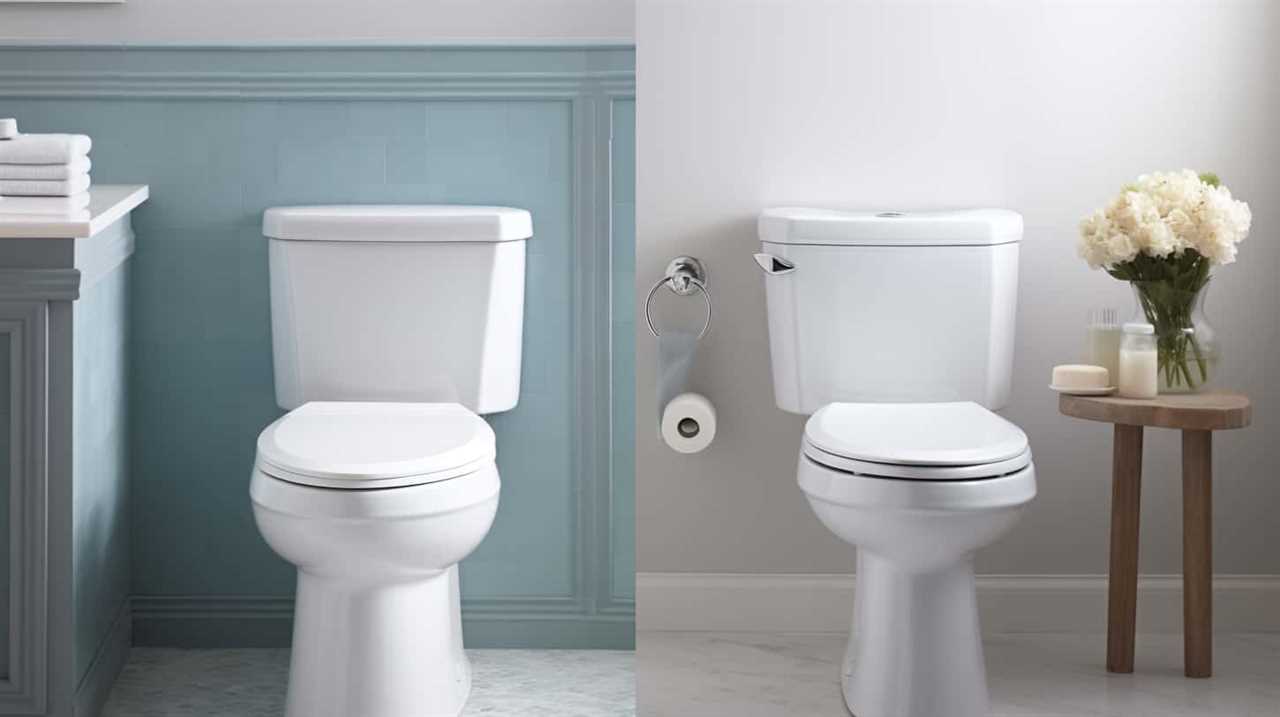
Having toilets with two flushes is like having a versatile tool in our hands, allowing us to efficiently manage our waste and contribute to water conservation efforts.

